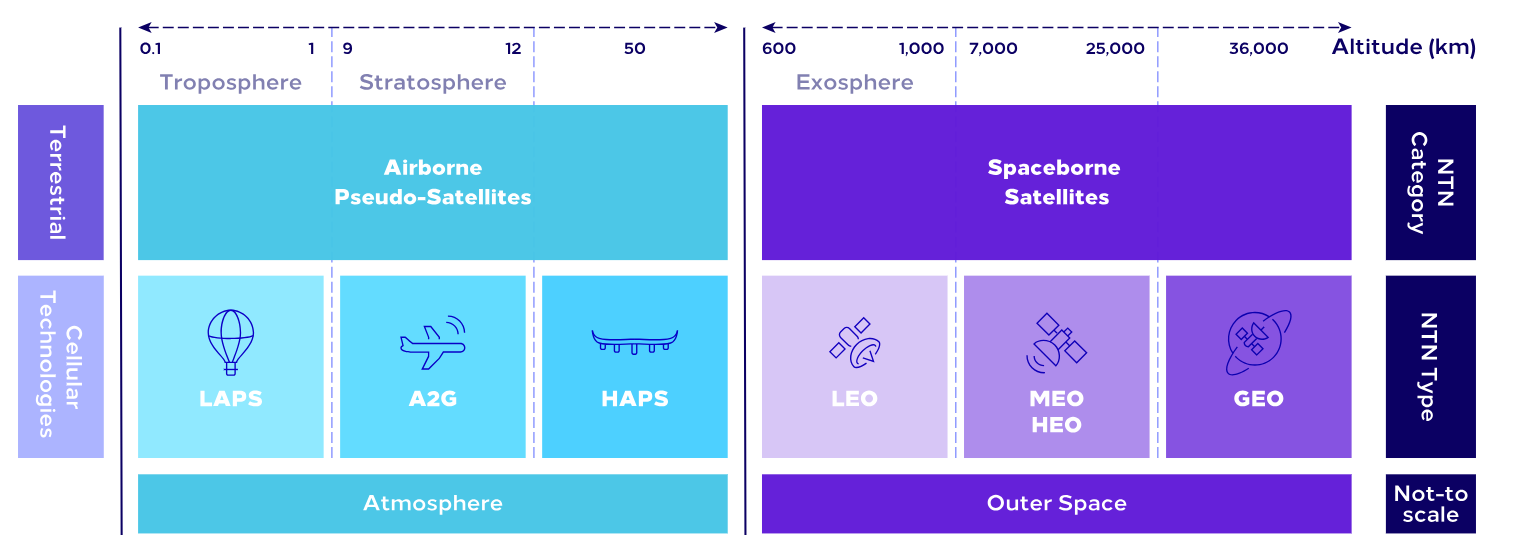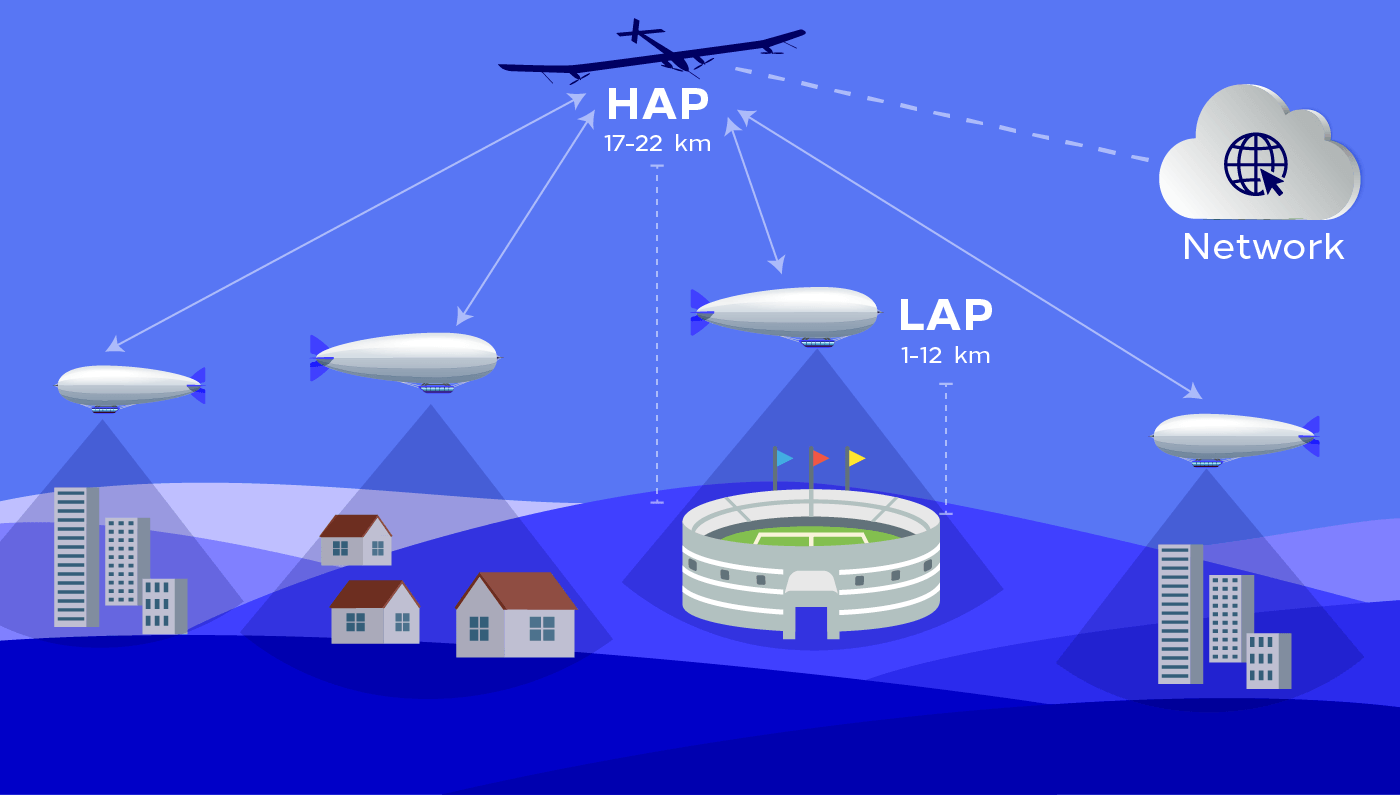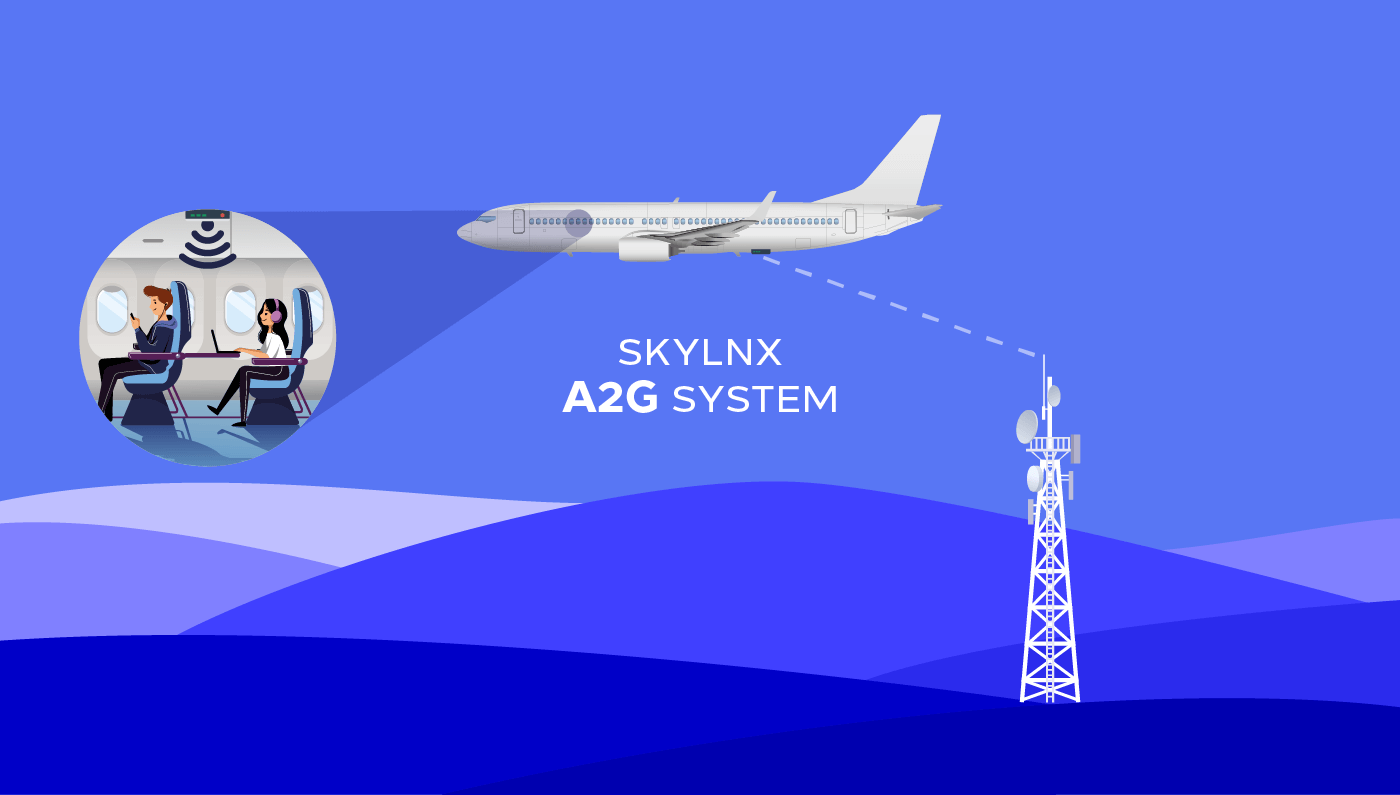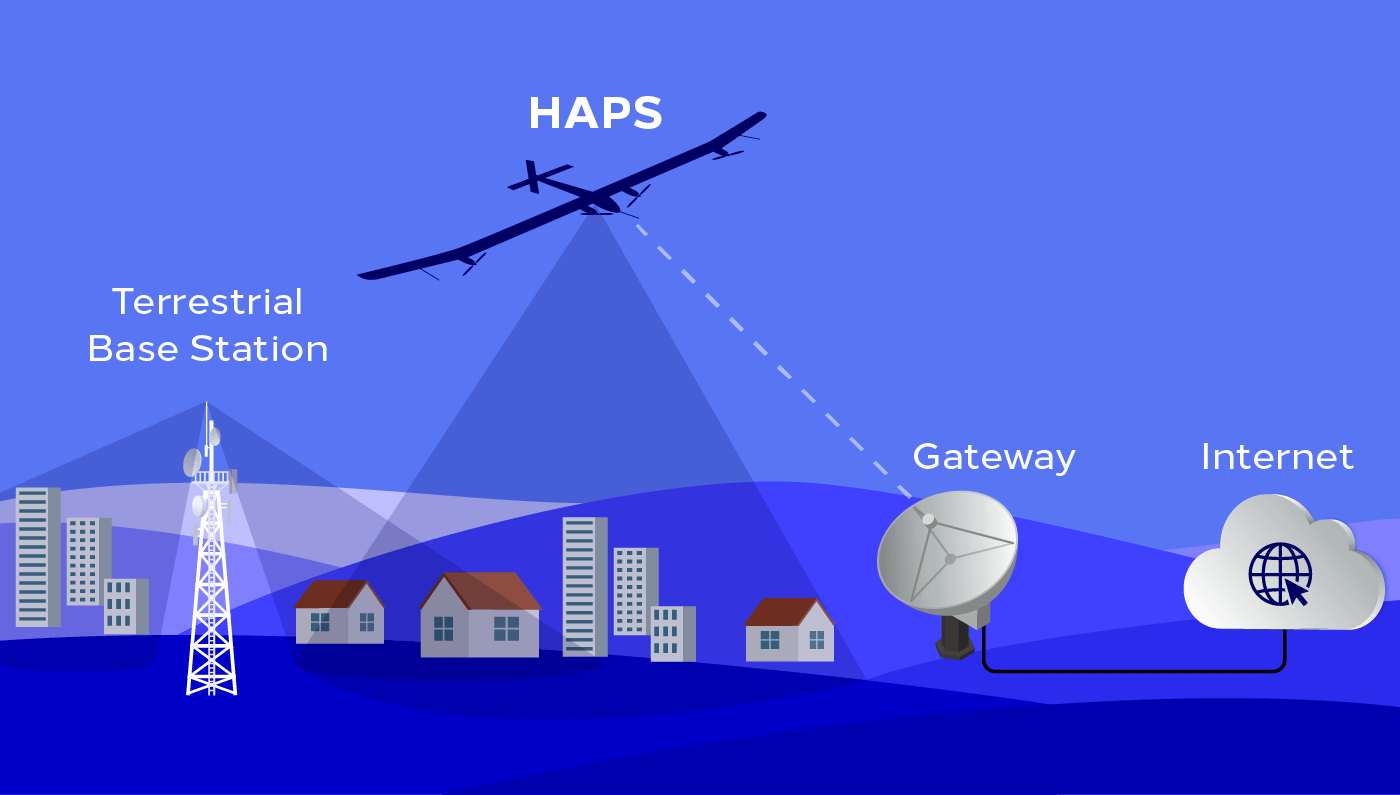No doubt that Saudi Arabia is moving faster towards digital transformation including Connectivity for everyone. For that reason, you can see many trials in the NTN program. This is a summary of each trial and a simple definition for it in Airborne
What is 5G NTN?
5G NTN will enable seamless roaming between terrestrial and satellite networks, using largely standard cellular devices, i.e., eliminating the need for proprietary terminals and fragmented satellite constellations. A 5G NTN is designed to provide high-speed wireless connectivity to remote and underserved locations, by leveraging a ‘space segment’ in the access side of the mobile network to deliver mobile services to users on the ground from satellites.
What is 5G NTN Use Cases?
- Service Continuity: Use cases where 5G services cannot be offered by terrestrial networks alone, and how a combination of terrestrial and nonterrestrial networks provides service continuity for such cases. Some examples are airborne platforms (e.g., a commercial or a private jet) and maritime platforms (e.g., a maritime vessel).
- Service Ubiquity: Use cases address unserved or under-served geographical areas, where terrestrial networks may not be available. Examples of ubiquity use cases are IoT (e.g., agriculture, asset tracking, metering), public safety (i.e., emergency networks), and home access.
- Service Scalability: Use cases that leverage the large coverage area of satellites and use multicasting or broadcasting similar content over a large area. An example of such a use case is the distribution of rich TV content (i.e., Ultra High-Definition TV).
What are 5G NTN Types?
NTN consists of variants of space-borne and aerial communication networks including GEO, MEO, LEO satellite constellations, High Altitude Platform Systems (HAPS), Low Altitude Platform Systems (LAPS), and air-to-ground (A2G) networks.

LOW ALTITUDE PLATFORMS (LAPS)
A LAP is an object (maybe a UAV or balloon) that has the capability of flying at low altitudes (e.g., a few hundred meters) for sufficient endurance to complete a mission.

AIR-TO-GROUND (A2G)
Air-to-ground is a Two-way communication between aircraft and stations or locations on the surface of the earth. The ground network consists of A2G base stations with skywards-pointing antennas optimized for airspace coverage, which create very large cells in the sky. Given that, unlike on the ground, radio signals can freely propagate.

HIGH ALTITUDE PLATFORM STATIONS (HAPS)
HAPS are radio stations located on an object that floats at the stratosphere layer and at a specified, nominal, fixed point relative to the Earth, providing telecommunication services coverage over a wide geographical range, with high-quality signals.

References:
- https://www.cst.gov.sa/
- 5G America, 5G, and Non-Terrestrial Networks.
